Caryn
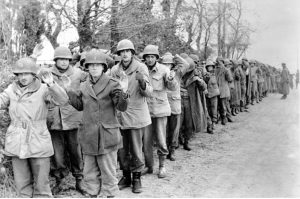 For as long as there have been wars, there have been prisoners of war. Obviously, part of the reason was to take those soldiers out of the fighting. If you are fighting against less enemy combatants, you have a better change of winning. It was a simply a part of war. Both sided took prisoners, and both sides knew that the other side was going to take prisoners. It was not the fact that prisoners were taken, but rather the way they were treated that made this part of war ugly sometimes.
For as long as there have been wars, there have been prisoners of war. Obviously, part of the reason was to take those soldiers out of the fighting. If you are fighting against less enemy combatants, you have a better change of winning. It was a simply a part of war. Both sided took prisoners, and both sides knew that the other side was going to take prisoners. It was not the fact that prisoners were taken, but rather the way they were treated that made this part of war ugly sometimes.
I’m sure that if there was work to do, it made sense to use the prisoners of war 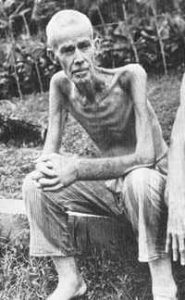 as, basically slave labor…make them earn their keep, so to speak, but often they were beaten, starved, overworked to the point of exhaustion, and basically treated like they were sub-human. Some nations were worse than others. And sometimes, the prisoners of war, weren’t even combatants, but civilians taken hostage for a variety of reasons…most of which had nothing to do with them being a danger in battle. Of course, from about the time of the Vietnam war, it became harder to tell if someone was a “combatant” or not. When children were sent out to interact with soldiers…bombs strapped to their chest…soldiers had to learn to be less than hospitable to the little ones too.
as, basically slave labor…make them earn their keep, so to speak, but often they were beaten, starved, overworked to the point of exhaustion, and basically treated like they were sub-human. Some nations were worse than others. And sometimes, the prisoners of war, weren’t even combatants, but civilians taken hostage for a variety of reasons…most of which had nothing to do with them being a danger in battle. Of course, from about the time of the Vietnam war, it became harder to tell if someone was a “combatant” or not. When children were sent out to interact with soldiers…bombs strapped to their chest…soldiers had to learn to be less than hospitable to the little ones too.
I understand the need for prisoners of war, when the war is still going on, but what is appalling is the treatment of the prisoners sometimes, and the refusal to give the prisoners back at the end of the conflict. Vietnam was also one of the times when prisoners were held long after the war. I know that sometimes the reasons for holding prisoners is that the opposing government refuses to abide by the conditions of the 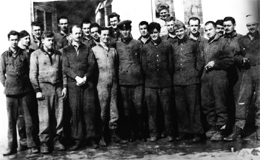 surrender of the losing side. Still, sometimes, the prisoners were held, for no legitimate reason, and for far longer than was reasonable. After World War II, the western Allies released their final prisoners in 1948, but many German POWs in the USSR were held for several more years. Most were used as slave labor in copper or coal mines, and anywhere between 400,000, and up to one million eventually died while in Russian custody. Some 20,000 former soldiers were still in Soviet hands at the time of Joseph Stalin’s death in 1953, and the last 10,000 didn’t get their freedom until 1955 and 1956 a full decade after the war had ended. That seems completely unconscionable to me, but then I’m not part of an evil nation.
surrender of the losing side. Still, sometimes, the prisoners were held, for no legitimate reason, and for far longer than was reasonable. After World War II, the western Allies released their final prisoners in 1948, but many German POWs in the USSR were held for several more years. Most were used as slave labor in copper or coal mines, and anywhere between 400,000, and up to one million eventually died while in Russian custody. Some 20,000 former soldiers were still in Soviet hands at the time of Joseph Stalin’s death in 1953, and the last 10,000 didn’t get their freedom until 1955 and 1956 a full decade after the war had ended. That seems completely unconscionable to me, but then I’m not part of an evil nation.
 When a child is born, their parents have high hopes for the baby’s life, not knowing anything about the child yet, or what talents he or she might have. As the years go by, the parents begin to notice different aspects of this new little person, and get little hints about their interests. Still, they don’t really know who this child will become. That part of their child is still in the future, and what they will be, remains to be seen. It always seems like it is so far in the future, but in fact, it isn’t. It will seem like just yesterday that you wondered who this child would be, and suddenly, they know.
When a child is born, their parents have high hopes for the baby’s life, not knowing anything about the child yet, or what talents he or she might have. As the years go by, the parents begin to notice different aspects of this new little person, and get little hints about their interests. Still, they don’t really know who this child will become. That part of their child is still in the future, and what they will be, remains to be seen. It always seems like it is so far in the future, but in fact, it isn’t. It will seem like just yesterday that you wondered who this child would be, and suddenly, they know.
That is the case with my niece, Chantel Balcerzak. When she was a little girl, she was such a little Diva, and trust me when I say that she is still a classy looking lady, but  there is so much more to the person that Chantel has grown up to be than that little pretty lady she always was. Chantel’s artistic talents started to shine through early on. She loves to write, decorate, refurbish furniture, and paint…and I, for one, have been the recipient of several of her designs. These days, Chantel’s interests have turned to wedding planning. She has started a Facebook site called Next To The Dress, and she is very good at what she does. I love her ideas, as do the brides and grooms she has helped to achieve their perfect day. She is able to plan any style of wedding, and she makes them absolutely beautiful. I just love Chantel’s creativity. I could never put together the things that she does…both in her weddings and her hobbies. I think that one of the main reasons that Chantel is so good at what she does, is because of her genuinely caring heart. I think it would be unthinkable for Chantel to
there is so much more to the person that Chantel has grown up to be than that little pretty lady she always was. Chantel’s artistic talents started to shine through early on. She loves to write, decorate, refurbish furniture, and paint…and I, for one, have been the recipient of several of her designs. These days, Chantel’s interests have turned to wedding planning. She has started a Facebook site called Next To The Dress, and she is very good at what she does. I love her ideas, as do the brides and grooms she has helped to achieve their perfect day. She is able to plan any style of wedding, and she makes them absolutely beautiful. I just love Chantel’s creativity. I could never put together the things that she does…both in her weddings and her hobbies. I think that one of the main reasons that Chantel is so good at what she does, is because of her genuinely caring heart. I think it would be unthinkable for Chantel to  have a wedding go bad…not because she planned it, but because it wouldn’t be…perfect for the bride and groom.
have a wedding go bad…not because she planned it, but because it wouldn’t be…perfect for the bride and groom.
I don’t know what Chantel’s mom, my sister, Cheryl Masterson thought she would become, but I know that she is very happy with the outcome. When a child is born, we know that they are an unwritten book, waiting to fill the pages with the wonderful choices they can make. I think Chantel has written a beautiful book of life for herself, and I am glad that I got to be a part of watching her become the beautiful woman she is….even if she is still a “little” lady. Today is Chantel’s birthday. Happy birthday Chantel!! Have a great day!! We love you!!
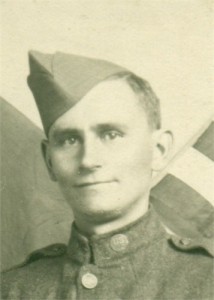 The United States is often called the Sleeping Giant. In the past, the United States has been known as the most powerful country in the world…back in the good old days, that is. Now China, Japan and Russia are also considered to be powerful countries where nuclear weaponry is concerned. The dollar was also the powerful currency, then and even now. The president of the United States was always considered the most powerful person, and I think still is today, or is moving back into that position. All these things considered, the United States was definitely a sleeping giant, because if it woke up it would do everything in its power to rectify things around the globe. As we saw on September 11, 2001, when terrorists attacked our country. Like Toby Keith sang in his song Courtesy Of The Red, White, And Blue (The Angry American), “Justice will be served, and the battle will rage. This big dog will fight when you rattle his cage. And you’ll be sorry that you messed with the U.S. of A” That is notoriously the way the United States has been when it comes to world conflict…slow to anger, but once we are in a war…we are in it to win it!
The United States is often called the Sleeping Giant. In the past, the United States has been known as the most powerful country in the world…back in the good old days, that is. Now China, Japan and Russia are also considered to be powerful countries where nuclear weaponry is concerned. The dollar was also the powerful currency, then and even now. The president of the United States was always considered the most powerful person, and I think still is today, or is moving back into that position. All these things considered, the United States was definitely a sleeping giant, because if it woke up it would do everything in its power to rectify things around the globe. As we saw on September 11, 2001, when terrorists attacked our country. Like Toby Keith sang in his song Courtesy Of The Red, White, And Blue (The Angry American), “Justice will be served, and the battle will rage. This big dog will fight when you rattle his cage. And you’ll be sorry that you messed with the U.S. of A” That is notoriously the way the United States has been when it comes to world conflict…slow to anger, but once we are in a war…we are in it to win it!
The same held true for the other wars we have been in. We might not jump in early, but when we do…look out. On this day, April 6, 1917, the United States Senate voted 82 to 6 to declare war against Germany, the United 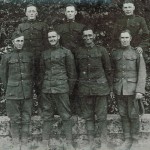 States House of Representatives endorses the declaration by a vote of 373 to 50, and America formally entered World War I. This action would be the one that would send my grandfather, George Byer to war. He was 24 years old. Grandpa didn’t talk much about his time in the war…at least not that I remember. I think that most of the men who came home after fighting in a war, are just happy to be home. They want to put it all behind them, and move forward with their lives, knowing that if it was ever necessary he would go back again. He was a patriot, and that was what patriots did. In fact, when the time came for the men to register for the “old man draft” of World War II…a time when men up to the age of 65 were required to register for the draft, Grandpa was honored to register, as were the other men between the ages of 45 and 65. These men felt like their time of usefulness was over, and when they were told that they were needed again, even if it was just for work on the home front, they all jumped at the chance to serve.
States House of Representatives endorses the declaration by a vote of 373 to 50, and America formally entered World War I. This action would be the one that would send my grandfather, George Byer to war. He was 24 years old. Grandpa didn’t talk much about his time in the war…at least not that I remember. I think that most of the men who came home after fighting in a war, are just happy to be home. They want to put it all behind them, and move forward with their lives, knowing that if it was ever necessary he would go back again. He was a patriot, and that was what patriots did. In fact, when the time came for the men to register for the “old man draft” of World War II…a time when men up to the age of 65 were required to register for the draft, Grandpa was honored to register, as were the other men between the ages of 45 and 65. These men felt like their time of usefulness was over, and when they were told that they were needed again, even if it was just for work on the home front, they all jumped at the chance to serve.
As for World War I, Grandpa would serve, and he would come home. Then, he would go on to live a long life…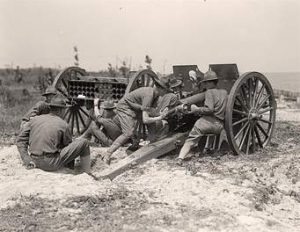 forever changed from the man he once was, because you see, war changes a man. They are changed by what they see, whether they were required to take a life or not. And if they were required to kill, then kill they would, because The Sleeping Giant had been awakened, and the Big Dog’s cage had been rattled. The United States would go to war, and they would win, along with their alleys, because losing was not an option…not if the world was to remain the kind of place we knew and loved. Germany was an evil empire, and that evil empire had to be stopped. I am very proud of my grandfather’s service, and I’m thankful that the Big Dog fought in this one and the other wars it has fought in. It was an important fight, and we needed to win it.
forever changed from the man he once was, because you see, war changes a man. They are changed by what they see, whether they were required to take a life or not. And if they were required to kill, then kill they would, because The Sleeping Giant had been awakened, and the Big Dog’s cage had been rattled. The United States would go to war, and they would win, along with their alleys, because losing was not an option…not if the world was to remain the kind of place we knew and loved. Germany was an evil empire, and that evil empire had to be stopped. I am very proud of my grandfather’s service, and I’m thankful that the Big Dog fought in this one and the other wars it has fought in. It was an important fight, and we needed to win it.
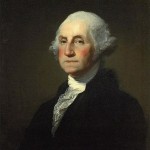 For anyone who has watched the process of getting a bill made law in Congress, the word Veto is a well known word. If the president doesn’t like the bill, he can always threaten to veto it, forcing Congress to get a two-thirds majority vote in both the House of Representatives and in the Senate to override his presidential veto. The exact number depends on how many representatives vote, so the actual number is subject to change. The word veto is Latin for I forbid, and it is the power used to unilaterally stop an official action, especially the enactment of legislation. Therefore, if the president doesn’t like the bill, even if it has passed the House and Senate, he can veto it to see if he can keep it from being passed on a second vote.
For anyone who has watched the process of getting a bill made law in Congress, the word Veto is a well known word. If the president doesn’t like the bill, he can always threaten to veto it, forcing Congress to get a two-thirds majority vote in both the House of Representatives and in the Senate to override his presidential veto. The exact number depends on how many representatives vote, so the actual number is subject to change. The word veto is Latin for I forbid, and it is the power used to unilaterally stop an official action, especially the enactment of legislation. Therefore, if the president doesn’t like the bill, even if it has passed the House and Senate, he can veto it to see if he can keep it from being passed on a second vote.
The first veto ever exercised was by President George Washington on April 5, 1792. The bill introduced a new plan for dividing seats in the House of Representatives that would have increased the amount of seats for northern states. After consulting with his politically divided and contentious cabinet, President Washington, who came from the southern state of Virginia, ultimately decided that the plan was unconstitutional because it provided for additional representatives for some states, and it would have introduced a number of representatives higher than that allowed by the Constitution. After a discussion with 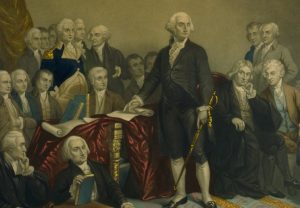 the president, Thomas Jefferson wrote in a letter that votes for or against the bill were divided along perfectly geographical lines between the North and South. Jefferson observed that Washington feared that a veto would incorrectly portray him as biased toward the South. In the end, Jefferson was able to convince the president to veto the bill on the grounds that it was unconstitutional and introduced principles that were liable to be abused in the future. Jefferson suggested apportionment instead be derived from “arithmetical operation, about which no two men can ever possibly differ.” With Washington’s veto, the bill was sent back to Congress. Though representatives could have attempted to overrule the veto with a two-thirds vote, Congress instead threw out the original bill and instituted a new one that apportioned representatives at “the ratio of one for every thirty-three thousand persons in the respective States.” That is a much more fair plan, in my opinion. George Washington would go on to veto one more bill during his time in office. In February 1797, the former commanding general of the Continental Army vetoed an act that would have reduced the number of cavalry units in the army. Neither of the vetoes were overridden by Congress.
the president, Thomas Jefferson wrote in a letter that votes for or against the bill were divided along perfectly geographical lines between the North and South. Jefferson observed that Washington feared that a veto would incorrectly portray him as biased toward the South. In the end, Jefferson was able to convince the president to veto the bill on the grounds that it was unconstitutional and introduced principles that were liable to be abused in the future. Jefferson suggested apportionment instead be derived from “arithmetical operation, about which no two men can ever possibly differ.” With Washington’s veto, the bill was sent back to Congress. Though representatives could have attempted to overrule the veto with a two-thirds vote, Congress instead threw out the original bill and instituted a new one that apportioned representatives at “the ratio of one for every thirty-three thousand persons in the respective States.” That is a much more fair plan, in my opinion. George Washington would go on to veto one more bill during his time in office. In February 1797, the former commanding general of the Continental Army vetoed an act that would have reduced the number of cavalry units in the army. Neither of the vetoes were overridden by Congress.
 Thirty six of the 45 presidents have vetoed at least one bill, with the most regular vetoes going to Franklin D Roosevelt with 372…seconded by Grover Cleveland with 346. There is also something called a pocket veto, which is basically when the president simply does nothing…refusing to sign it into law, or to veto it outright, and it was used by a number of presidents as well. That one seems strange to me, but it seems to have the same procedure to pass the bill into law that the regular veto does. Politics is a messy business, because with so many people involved, there is bound to be differing opinions on what should be done. Nevertheless, try as he might, while the buck might stop at the president’s office, the bill might not, but only if Congress can get its collective act together and vote to override a presidential veto.
Thirty six of the 45 presidents have vetoed at least one bill, with the most regular vetoes going to Franklin D Roosevelt with 372…seconded by Grover Cleveland with 346. There is also something called a pocket veto, which is basically when the president simply does nothing…refusing to sign it into law, or to veto it outright, and it was used by a number of presidents as well. That one seems strange to me, but it seems to have the same procedure to pass the bill into law that the regular veto does. Politics is a messy business, because with so many people involved, there is bound to be differing opinions on what should be done. Nevertheless, try as he might, while the buck might stop at the president’s office, the bill might not, but only if Congress can get its collective act together and vote to override a presidential veto.
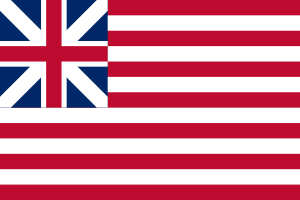 With the American flag at the center of so many protests, it seemed to me a good time to discuss the flag that many, and I believe truly most, Americans hold so dear. Over the years that the United states has been a nation, there have been a number of different flags. As we grew, the flag had to change to show the growing number of states. There were people who were not happy about the move from a flag with 13 stars to one with 20 stars…so the decision was made to reduce the number of stripes to 13, in order to honor the original 13 colonies. On this day, April 4, 1818, Congress passed an act to do just that at the suggestion of United States Naval Captain Samuel C Reid. The plan also allowed for a new star to be added when each new state was admitted. The stripes would never change. The act specified that each new flag design should become official on the first July 4, our Independence Day, following admission of one or more new states. The most recent change, from 49 stars to 50, occurred in 1960 when the present design was chosen, after Hawaii gained statehood in August 1959. Before that, the admission of Alaska in January 1959 prompted the debut of a short-lived 49 star flag. If another state were ever to be added, I think it would take some getting used to. Our current flag has been the flag for 57 years after all. That is almost all of my life.
With the American flag at the center of so many protests, it seemed to me a good time to discuss the flag that many, and I believe truly most, Americans hold so dear. Over the years that the United states has been a nation, there have been a number of different flags. As we grew, the flag had to change to show the growing number of states. There were people who were not happy about the move from a flag with 13 stars to one with 20 stars…so the decision was made to reduce the number of stripes to 13, in order to honor the original 13 colonies. On this day, April 4, 1818, Congress passed an act to do just that at the suggestion of United States Naval Captain Samuel C Reid. The plan also allowed for a new star to be added when each new state was admitted. The stripes would never change. The act specified that each new flag design should become official on the first July 4, our Independence Day, following admission of one or more new states. The most recent change, from 49 stars to 50, occurred in 1960 when the present design was chosen, after Hawaii gained statehood in August 1959. Before that, the admission of Alaska in January 1959 prompted the debut of a short-lived 49 star flag. If another state were ever to be added, I think it would take some getting used to. Our current flag has been the flag for 57 years after all. That is almost all of my life.
For 241 years, the American flag has been the symbol of our nation’s strength and unity. It’s been a source of pride and inspiration for millions of citizens. It has been a prominent icon in our national history. On January 1, 1776, the Continental Army was reorganized in accordance with a Congressional resolution which placed American forces under George Washington’s control. On that New Year’s Day the Continental Army moved to take back Boston, which had been previously been taken over by the British Army. Washington ordered the Grand Union flag hoisted above his base at Prospect Hill. It had 13 alternate red and white stripes and the British Union Jack in the upper left-hand corner. In May of 1776, Betsy Ross sewed the first American flag. On June 14, 1777, in order to establish an official flag for our newly independent nation, the Continental Congress passed the first Flag Act, which read, “Resolved, That the flag of the United States be made of thirteen stripes, alternate red and white; that the union be thirteen stars, white in a blue field, representing a new Constellation.” Congress passed several acts between 1777 and 1960, that changed the shape, design and arrangement of the flag and allowed for additional stars and stripes to be added to reflect the admission of each new state. The Act of January 13, 1794 provided for 15 stripes and 15 stars after May 1795. The Act of April 4, 1818 provided for 13 stripes and one star for each state, to be added to the flag on the 4th of July following the admission of each new state, signed by President Monroe. An Executive Order by President Taft dated June 24, 1912, established proportions of the flag and provided for arrangement of the stars in six horizontal rows of eight each, a single point of each star to be upward. The Executive Order of President Eisenhower dated January 3, 1959, provided for the arrangement of the stars in seven rows of seven stars each, staggered horizontally and vertically. The Executive Order of President Eisenhower dated August 21, 1959, provided for the arrangement of the stars in nine rows of stars staggered horizontally and eleven rows of stars staggered vertically. Today the flag consists of thirteen horizontal stripes, seven red alternating with 6 white. The stripes represent the original 13 colonies, the stars represent the 50 states of the Union. Even the colors of the flag are symbolic…Red symbolizes Hardiness and Valor, White symbolizes Purity and Innocence, and Blue represents Vigilance, Perseverance and Justice.
Our flag is more than just a piece of cloth, or a protesting tool. It is a flag to be proud of, not to burn. It is the symbol of a great nation…a nation that rushes to the defense of other weaker nations, so that they can remain free…a nation that vehemently protects the rights of it’s citizens, even when every fiber of its being want to slap 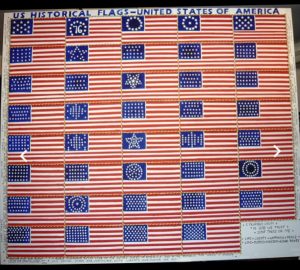 some people silly. Our nation knows that if one right is taken away, it opens a door for others to be lost as well. Our freedom depends on our insistence to follow the rules laid out before us…like them or not. As a patriot, I understand that, but I also wish that those who use the freedom to protest, would also realize that in burning the flag, they are, in essence, saying that they don’t think that we should have the very freedoms they use to protest. It is really a vicious circle when you think about it. They are fighting, and burning a flag, in an effort to have the freedom to do what they want, but in doing so, they are saying that they don’t respect the nation that made that very thing possible for them. What a strange idea!
some people silly. Our nation knows that if one right is taken away, it opens a door for others to be lost as well. Our freedom depends on our insistence to follow the rules laid out before us…like them or not. As a patriot, I understand that, but I also wish that those who use the freedom to protest, would also realize that in burning the flag, they are, in essence, saying that they don’t think that we should have the very freedoms they use to protest. It is really a vicious circle when you think about it. They are fighting, and burning a flag, in an effort to have the freedom to do what they want, but in doing so, they are saying that they don’t respect the nation that made that very thing possible for them. What a strange idea!
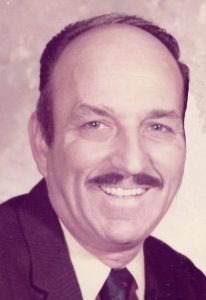
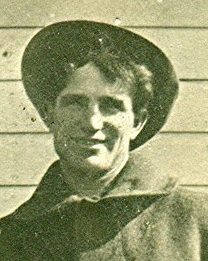 Over the years, I can recall that my dad, Allen Lewis Spencer had a number of hammers, of differing handles and sizes…like most men do, but for as long as I can remember, one hammer was always there. It wasn’t that this hammer was made of gold, or even looked fancy. It had a plain handle, but I suspect it is a hardwood, and not a simple pine. The handle is a medium toned wood, but it may have darkened with age and use. It also has a scorch mark about five inches long along one side, that happened when it was laid a little too close to a campfire. Dad rescued it just in the nick of time. He had to save it, you see. It wasn’t just any hammer…it was his dad’s hammer, and with his dad’s passing, the hammer was given to my dad.
Over the years, I can recall that my dad, Allen Lewis Spencer had a number of hammers, of differing handles and sizes…like most men do, but for as long as I can remember, one hammer was always there. It wasn’t that this hammer was made of gold, or even looked fancy. It had a plain handle, but I suspect it is a hardwood, and not a simple pine. The handle is a medium toned wood, but it may have darkened with age and use. It also has a scorch mark about five inches long along one side, that happened when it was laid a little too close to a campfire. Dad rescued it just in the nick of time. He had to save it, you see. It wasn’t just any hammer…it was his dad’s hammer, and with his dad’s passing, the hammer was given to my dad.
Most wooden handled hammers don’t have a long handle life. That is probably the main reason that many, if not most hammers are made of metal these days. This wooden handled hammer is different, however. My grandfather, Allen Luther Spencer was a carpenter for the Great Northern Railway. His job was to build and repair seats, trim, walls, and floors…anything made of wood on the trains of the Great Northern Railway. He also made tables and chairs for his own family, and he did it all with that same hammer that my dad inherited upon his passing. Unfortunately, I never knew my grandfather, because he passed away before my parents were married. That leaves my sisters and me with only the stories we have heard from family and my Uncle Bill Spencer’s family history. I do know that while my grandfather’s work might never have been in the caliber of my cousins Gene Fredrick, and his sons, Tim and Shawn, he did make some nice things. What impresses me the most is that any work needing a hammer was done by the same hammer that my dad inherited, and that even after all the use my dad has give the hammer, it is still in 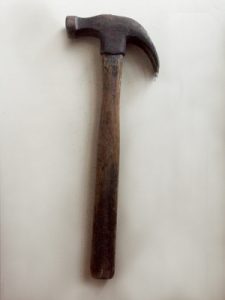
 amazing shape. Things were just made well in those days.
amazing shape. Things were just made well in those days.
My dad took great care of that hammer, because it was as much a treasure to him as it is to me. It is so much more than just a hammer, it was my dad’s hammer, and his dad’s hammer. The handle still has the oil from Dad’s hand on it, making that spot darker than the rest of the handle, and I can tell you, that I will not be using the hammer, nor will I clean off that oil, or sand off the scorch mark, or the one little sliver of wood that was torn off of the handle at some point. You see, I think the hammer is just perfect the way it is, and I plan to display it with no changes to it at all, because it was my dad’s hammer, and to me…that makes it priceless.
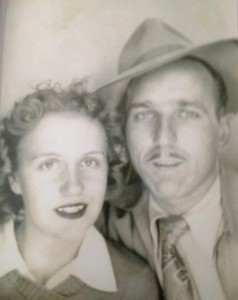 Whenever my sisters and I get together to go through some more of our parents things, I find that the time spent is bittersweet. We enjoy the time together, sharing memories and stories of the past, but there isn’t always regret, because our parents are gone and can’t be there with us. We were always a close family, and as we visit, I can’t help but think just how much Mom and Dad would have loved to be there, listening to the laughter of their girls. As we went through the attic this weekend, there much of the laughter and camaraderie that our parents taught us. They would have been proud of our teamwork, and of course, thrilled with some of the things we found.
Whenever my sisters and I get together to go through some more of our parents things, I find that the time spent is bittersweet. We enjoy the time together, sharing memories and stories of the past, but there isn’t always regret, because our parents are gone and can’t be there with us. We were always a close family, and as we visit, I can’t help but think just how much Mom and Dad would have loved to be there, listening to the laughter of their girls. As we went through the attic this weekend, there much of the laughter and camaraderie that our parents taught us. They would have been proud of our teamwork, and of course, thrilled with some of the things we found.
It had been many years since either of our parents were able to get up in the attic, and Mom couldn’t figure out what had happened to some of the things she felt were precious. If she weren’t in Heaven now, she would know where those treasures had been, and that they had fared well through the years. Now, some of those treasures have been divided up between their girls, and some will be in time. I just wish that we could have found them before Mom passed away, because she always wondered what happened to some of their things. I suppose it happens to most of us, at one time or another. We put something away for safe keeping, and then, we can’t remember where we put it. Mom was right when she said that some of the things were precious, because they were.
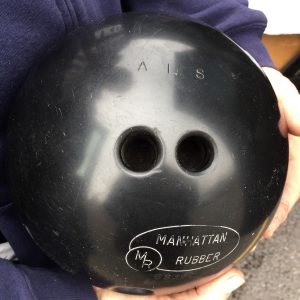
As we planned the weekend’s work, we expected the items in the attic to be mostly junk…old toys, old clothes, and such, and we did find those things, but there were some surprises too. We found more of Dad’s uniforms from World War II, as well as the medals Mom thought had been lost forever. We found her antique sewing machines, and an antique typewriter…yes, the really old style. We found their bowling balls from the years when they bowled, and that made me miss them a lot. I remember all those bowling years, and I suppose that is why I still bowl today. Bowling was their sport of choice, and all of their kids and some of their grandkids bowl too. We made the decision to donate their bowling balls to Sunrise Lanes, so that other people could use them, and enjoy their sport of choice too. I think Mom and Dad would be pleased…I know the employees at the 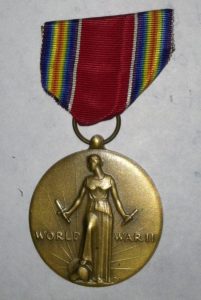
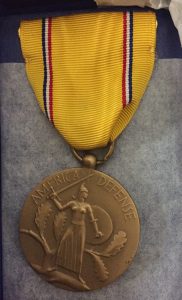 blowing alley were.
blowing alley were.
We also found many pictures, as well as negatives and film. We are excited to have them developed, but dividing them up will be a future get together, because we want them scanned so we can all have copies. We spent a little time looking through the pictures today, and I can tell you that they are precious. Baby pictures, baptismal pictures, baby shower pictures, and many others. I can’t wait to look through those, as well as the love letters Dad sent to Mom…and yes she kept them all tied in a neat little ribbon. Yes, the weekend was an exciting one in many ways, and a sad one in many others, but we would all agree that the treasures found were precious.
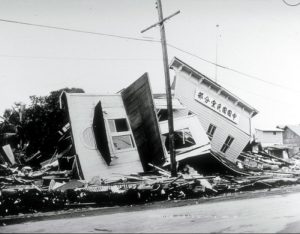
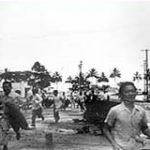 When most of us think about April Fool’s Day, we think of playing some funny prank on our family or friends, but on April Fool’s Day 1946, the Earth played a prank, if it could be called that, on Hawaii. It was a prank that wasn’t funny, and it would claim the lives of 159 people. Early in the morning of that April Fool’s Day, a 7.4 magnitude earthquake struck in the North Pacific, 13,000 feet beneath the ocean surface, and off Unimak Island in the Aleutian chain, that makes up the tail of Alaska. The quake triggered devastating tidal waves throughout the Pacific, and particularly aimed at Hawaii. The first tidal wave hit Unimak Island shortly after the quake struck. The wave was estimated to be almost 100 feet, and it crashed into a lighthouse 30 feet above sea level. Five people lived in the lighthouse. It was smashed to pieces, and all five were killed instantly. The wave then headed toward the Southern Pacific at 500 miles per hour. The situation was like a freight train carrying an atomic bomb.
When most of us think about April Fool’s Day, we think of playing some funny prank on our family or friends, but on April Fool’s Day 1946, the Earth played a prank, if it could be called that, on Hawaii. It was a prank that wasn’t funny, and it would claim the lives of 159 people. Early in the morning of that April Fool’s Day, a 7.4 magnitude earthquake struck in the North Pacific, 13,000 feet beneath the ocean surface, and off Unimak Island in the Aleutian chain, that makes up the tail of Alaska. The quake triggered devastating tidal waves throughout the Pacific, and particularly aimed at Hawaii. The first tidal wave hit Unimak Island shortly after the quake struck. The wave was estimated to be almost 100 feet, and it crashed into a lighthouse 30 feet above sea level. Five people lived in the lighthouse. It was smashed to pieces, and all five were killed instantly. The wave then headed toward the Southern Pacific at 500 miles per hour. The situation was like a freight train carrying an atomic bomb.
Hawaii was 2,400 miles south of the quake’s epicenter, and Captain Wickland of the United States Navy was the first person to spot the coming wave at about 7:00am, four and a half hours after the quake struck in the Aleutian Islands. His position on the bridge of a ship, 46 feet above sea level, put him at eye level with a “monster wave” that he described as two miles long. The first wave came in and receded, then the water in Hilo Bay seemed to disappear. The boats that were docked there, settled on the sea floor, surrounded by flopping fish. Then…the second wave hit…and it was massive!! The city of Hilo was hit by a 32 foot wave that devastated the town. Nearly a third of the city was completely destroyed. The bridge that crossed the Wailuku River was picked up by the wave, and pushed 300 feet away. In Hilo, 96 people lost their lives in the tsunami. Other parts of Hawaii were hit even worse. In some places, the waves reached heights of 60 feet. A schoolhouse in Laupahoehoe was crushed by the tsunami, killing the teacher and 25 students inside.
The massive wave was seen as far away as Chile, where, 18 hours after the quake near Alaska, unusually large waves crashed ashore, but there were no casualties. This tsunami prompted the United States to establish the Seismic SeaWave Warning System two years later, which is now known as the Pacific Tsunami Warning System. 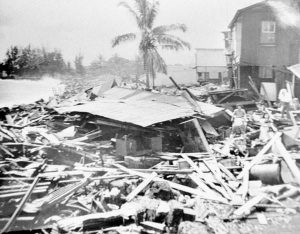
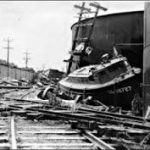 It uses undersea buoys throughout the ocean, in combination with seismic-activity detectors, to find possible killer waves. The warning system was used for the first time on November 4, 1952. That day, an evacuation was successfully carried out, but the expected wave never materialized. Still, like the fire drills we all know about from school, maybe Tsunami Drills wouldn’t be a bad thing either, especially if it would prevent the kind of loss of life that Hawaii experienced on that awful April Fool’s Day in 1946.
It uses undersea buoys throughout the ocean, in combination with seismic-activity detectors, to find possible killer waves. The warning system was used for the first time on November 4, 1952. That day, an evacuation was successfully carried out, but the expected wave never materialized. Still, like the fire drills we all know about from school, maybe Tsunami Drills wouldn’t be a bad thing either, especially if it would prevent the kind of loss of life that Hawaii experienced on that awful April Fool’s Day in 1946.

 My niece, Liz Masterson, doesn’t realize what an inspiration she is to a lot of people, or if she does, she is just so not conceited, that she would never acknowledge that she knows. She is a journalism teacher at Kelly Walsh High School, and as such, she also teaches English, and puts out the yearbook. Her younger English students may or may not realize how much she does for them, but her journalism students, and the students she works with on the yearbook, know very well, how special she is. The friendships she has made with those students, and yes, I say friendships, have and will last for as long as they live. How many people keep in touch with and even spend time with their teachers after high school? Not very many, if any, but Liz is special. She treats them like the amazing people she knows they can become, when they are still students, and later when they start out in their lives, they remember that she was always there for them…cheering them on. There is no greater tribute a teacher can receive than to have a student say that if it wasn’t for this teacher, I might not have lived to my full potential. Liz has been that teacher to her students, and they have told her so.
My niece, Liz Masterson, doesn’t realize what an inspiration she is to a lot of people, or if she does, she is just so not conceited, that she would never acknowledge that she knows. She is a journalism teacher at Kelly Walsh High School, and as such, she also teaches English, and puts out the yearbook. Her younger English students may or may not realize how much she does for them, but her journalism students, and the students she works with on the yearbook, know very well, how special she is. The friendships she has made with those students, and yes, I say friendships, have and will last for as long as they live. How many people keep in touch with and even spend time with their teachers after high school? Not very many, if any, but Liz is special. She treats them like the amazing people she knows they can become, when they are still students, and later when they start out in their lives, they remember that she was always there for them…cheering them on. There is no greater tribute a teacher can receive than to have a student say that if it wasn’t for this teacher, I might not have lived to my full potential. Liz has been that teacher to her students, and they have told her so.
Another part of Liz’s job as the journalism teacher, is photographer, and she is an amazing photographer. She captures such precious moments in the students’ lives. Everything from sports, to team pictures, to dances, and other functions, have been captured by Liz’s lens…and in perfect detail. She has also taken many of the Senior pictures for the yearbook, including the family members who have gone through the ranks of high school. She has also taken many other family pictures, and recently, the pictures for our church’s website. Her photographic talents are endless and ever expanding. Liz stays up on techniques and styles, and so her photography changes with the times…becoming more amazing.

Liz has many interests, not the least of which is traveling, and of course, her babies…puppies, Luka, Scout, and Buffy, and her cat, Piper. She mothers those babies just like you would a child, and they love her like she is their mom. It is a beautiful relationship. They love her as much as she loves them. Liz has a well rounded, happy life, and she is an amazing inspiration to all who know her. Today is Liz’s birthday. Happy birthday Liz!! Have a great day!! We love you!!
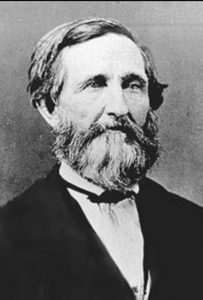 In the movies about the old west, you often see a gun fight. If someone got shot, the procedure to get the bullet out, was…well, painful. When we think of an operation, we think of a person being under anesthesia, and completely asleep during the entire procedure. In reality, prior to March 30, 1842, people who had to have an operation, had better have a strong constitution, because the best a doctor could do for them was to have them bite down on a stick. Now, this didn’t reduce the pain, but I suppose it lessened the noise level of the scream that the doctor knew was coming. I’m sure that surgery was seriously the last resort, and even often delayed longer than it should have been, simply because of the pain involved.
In the movies about the old west, you often see a gun fight. If someone got shot, the procedure to get the bullet out, was…well, painful. When we think of an operation, we think of a person being under anesthesia, and completely asleep during the entire procedure. In reality, prior to March 30, 1842, people who had to have an operation, had better have a strong constitution, because the best a doctor could do for them was to have them bite down on a stick. Now, this didn’t reduce the pain, but I suppose it lessened the noise level of the scream that the doctor knew was coming. I’m sure that surgery was seriously the last resort, and even often delayed longer than it should have been, simply because of the pain involved.
Enter, Dr Crawford Williamson Long, an American surgeon and pharmacist. Long was a bright child, graduating from the local academy at 14 years old, and continuing on to the University of Georgia in Athens. In 1835, he received his Masters Degree. Then, he began studying at Transylvania College in the fall of 1836 in Lexington, Kentucky. Long studied under Benjamin Dudley, a revered surgeon. He observed and participated in many surgeries and noted the effects of operating without anesthesia. Long transferred to the University of Pennsylvania in Philadelphia after spending only a year at Transylvania College, and was introduced to some of the most cutting edge medical technology of the time. He received his MD degree at the University of Pennsylvania in 1839.
After an 18 month internship in New York, Dr Long returned to Georgia. He took over a rural medical practice in Jefferson, Georgia in 1841. After observing the same physiological effects with Diethyl Ether that Humphry Davy had described for nitrous oxide in 1800, he used Ether for the first time on March 30, 1842 to remove a tumor from the neck of a patient, James M. Venable. He administered Sulfuric Ether on a towel and simply had the patient inhale. He performed many other surgeries using this technique over the next few years. Then, he introduced the technique to his obstetrics practice as well. Long subsequently removed a second tumor from Venable and used Ether as an anesthetic in amputations and childbirth. While Long’s use of Ether continued for quite a while, he didn’t immediately publish his findings. The results of these trials were eventually published in 1849 in The Southern Medical and Surgical Journal. It was a major advancement in surgical procedures.
 General anesthesia suppresses central nervous system activity and results in unconsciousness and total lack of sensation. Sedation suppresses the central nervous system to a lesser degree, inhibiting both anxiety and creation of long-term memories without resulting in unconsciousness. Of course, Ether is no longer used, because of the dangerous side effects, but many other types of anesthesia have been developed since Ether was used. I can’t imagine just how awful it would be to have surgery without anesthesia, and I for one am glad that it was developed. My shoulder surgery would have been horrible, if it had to be done without my arm being completely numb with a newer form of medicine that kept it numb, and me comfortable all that day.
General anesthesia suppresses central nervous system activity and results in unconsciousness and total lack of sensation. Sedation suppresses the central nervous system to a lesser degree, inhibiting both anxiety and creation of long-term memories without resulting in unconsciousness. Of course, Ether is no longer used, because of the dangerous side effects, but many other types of anesthesia have been developed since Ether was used. I can’t imagine just how awful it would be to have surgery without anesthesia, and I for one am glad that it was developed. My shoulder surgery would have been horrible, if it had to be done without my arm being completely numb with a newer form of medicine that kept it numb, and me comfortable all that day.

